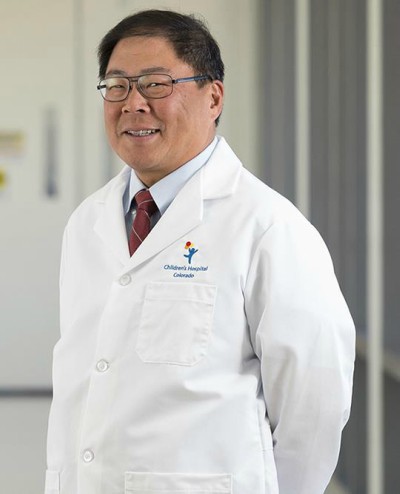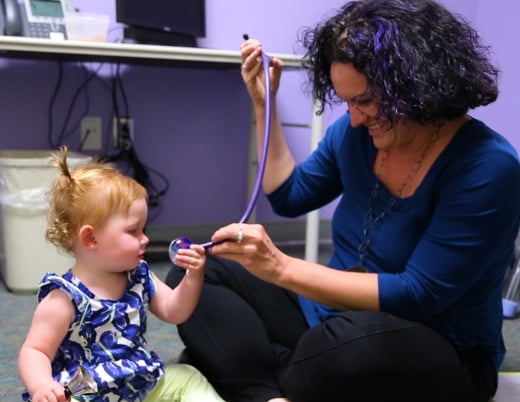Key takeaways
-
This is the first study to systematically dissect the role of HIF in esophageal epithelial function in the context of mucosal healing in EoE.
-
Eosinophilic inflammation increases oxygen demands on the epithelial surface and chronic hypoxia contributes to maladaptive epithelial responses in EoE.
-
Hypoxia-inducible factor-focused therapies may have the potential to restore dysfunctional esophageal epithelial barriers in EoE and treat other atopic diseases.
Background: EoE and epithelial barrier dysfunction
Eosinophilic esophagitis (EoE) is a chronic allergic inflammatory disease of the esophagus caused by the accumulation of eosinophils in the esophagus. This accumulation leads to esophageal inflammation and injury.
EoE affects both children and adults, and occurs in 4 out of every 10,000 people in the U.S. There are no Food and Drug Administration-approved therapies for EoE.
Epithelial barrier dysfunction and hypoxia-inducible factor
Epithelial barrier dysfunction is a significant factor in many allergic diseases, including EoE. These barriers act as critical physical buffers between environmental antigens and the immune system. Dysfunctional barriers can lead to allergic sensitization and the development of chronic inflammatory allergic diseases such as EoE.
Defective epithelial barriers in allergy can be established and maintained by genetic and environmental factors and abnormal inflammatory or developmental signaling pathways.
Hypoxia-inducible factor (HIF) is a transcriptional regulator involved in oxygen delivery to hypoxic tissue. HIF-1 induces transcription of a number genes involved processes maintaining and increasing oxygen delivery to hypoxic tissues. In EoE, HIF and its epithelial target molecules are down regulated.
In a multicenter study, Glenn Furuta, MD, director of the Gastrointestinal Eosinophilic Diseases Program at Children’s Hospital Colorado, and his collaborator Joanne Masterson, PhD, of Maynooth University Human Health Institute in Ireland, used a series of genetic and pharmacologic approaches to evaluate HIF’s potential contribution to epithelial barrier dysfunction and to investigate its potential as a treatment modality for mucosal healing and reestablishment of epithelial barrier in allergic disease.
Research methods
Three study groups underwent clinically-indicated endoscopy and esophageal mucosal biopsy. Additionally, human eosinophils were isolated from healthy volunteers and experimental EoE was induced in transgenic mice.

Results: HIF-1α signaling findings
Investigators screened a number of HIF target genes following exposure to a hypoxic environment. They found that:
- Prolonged hypoxia leads to suppression of signaling of the HIF subunit HIF-1α in esophageal epithelial cells.
- HIF-1α signaling is weakened in patients with ongoing active EoE.
In immortalized human esophageal epithelial cells transduced with HIF1A-targeting shRNA to establish HIF1A knockdown there was:
- ~90 percent depletion of HIF1A
- Diminished HIF-1α signaling in physiologically normal oxygen, or physioxic, esophageal epithelial cells lead to barrier dysfunction
In molecular mechanisms, where the epithelial barrier functional deficit occurs investigators found:
- Loss of basal HIF-1α signaling resulted in a specific decrease in claudin-1 expression.
- Esophageal epithelial cell cultures showed prolonged hypoxia leads to decreased CLDN1 expression.
- CLDN1 was confirmed as a direct HIF-1α target gene in stratified squamous esophageal epithelia.
To determine the clinical relevance of these findings, investigators measured HIF-1α/claudin-1 in human esophageal biopsies. They discovered:
- CLDN1 mRNA was significantly decreased in active EoE compared with those with inactive disease and normal controls
- CLDN1 expression is weakened and claudin-1 protein is mis localized in patients with EoE
When investigators developed a mouse model of EoE, they found:
- Prolonged and sustained hypoxia mediated by chronic esophageal epithelial eosinophilia leads to dysregulated HIF-1α/CLDN1 signaling axis.
- HIF-1α stabilization might serve as a novel therapeutic intervention for EoE barrier dysfunction.
- A mouse model created to selectively overexpressed HIF-1α in the esophageal epithelium was found to be protective.
Human esophageal biopsies from both controls and active EoE participants treated ex vivo with the pan-hydroxylase inhibitor dimethyloxalylglycine (DMOG) to stabilize HIF and tested for clinical applicability showed:
- Significantly increased expression of GLUT1 and CLDN1
- Pharmacologic stabilization in human biopsies restores HIF-1α/CLDN1 axis
Discussion and conclusion: HIF-1α is an innovative therapeutic target for inflammatory disease
There was a striking decrease in esophageal expression of HIF-1α in EoE, which plays a direct role in barrier dysfunction. Eosinophilic inflammation increases oxygen demands placed on the epithelial surface, causing chronic hypoxia that contributes to maladaptive epithelial responses.
HIF-1α plays a critical role in maintaining barrier and highlight the HIF-1α/claudin-1 axis as an innovative therapeutic target for EoE. HIF-1α is a potentially novel pathophysiologic mechanism in EoE and that HIF-1α–focused therapies are candidate treatments for maintaining and restoring the esophageal epithelial barrier and in mucosal healing in that disease and should be explored as a potential therapy in other atopic conditions.
Drs. Furuta and Masterson continue to work together on highly collaborative projects between Children’s Colorado, University of Colorado School of Medicine and Maynooth University in Ireland.
Featured Researchers

Glenn Furuta, MD
Director
Digestive Health Institute
Children's Hospital Colorado
Professor
Pediatrics-Gastroenterology, Hepatology and Nutrition
University of Colorado School of Medicine
Joanne Masterson, PhD
Associate professor
Biosciences and Electronic Engineering
Maynooth University





 720-777-0123
720-777-0123










